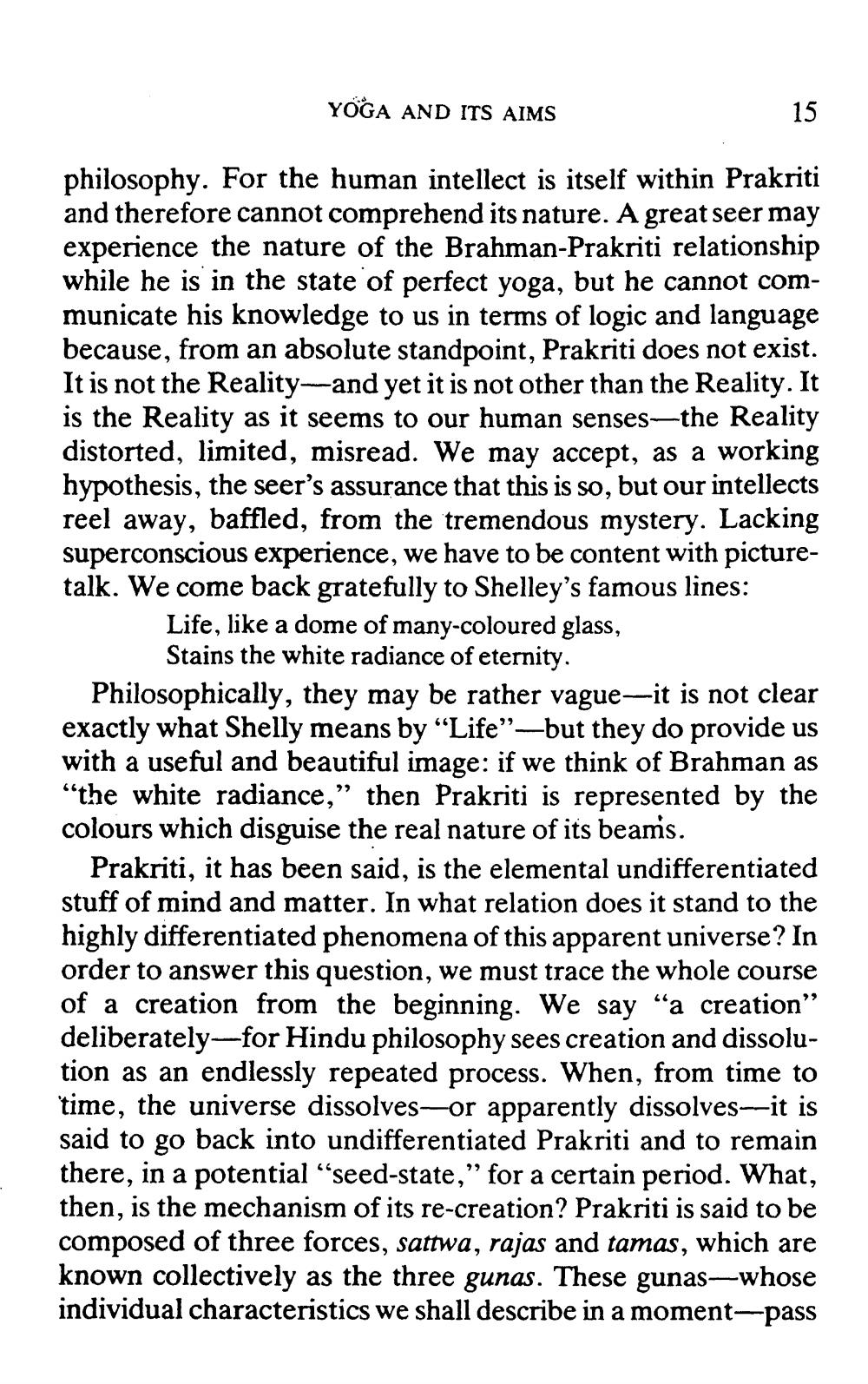________________
YOGA AND ITS AIMS
philosophy. For the human intellect is itself within Prakriti and therefore cannot comprehend its nature. A great seer may experience the nature of the Brahman-Prakriti relationship while he is in the state of perfect yoga, but he cannot communicate his knowledge to us in terms of logic and language because, from an absolute standpoint, Prakriti does not exist. It is not the Reality-and yet it is not other than the Reality. It is the Reality as it seems to our human senses—the Reality distorted, limited, misread. We may accept, as a working hypothesis, the seer's assurance that this is so, but our intellects reel away, baffled, from the tremendous mystery. Lacking superconscious experience, we have to be content with picturetalk. We come back gratefully to Shelley's famous lines:
Life, like a dome of many-coloured glass,
Stains the white radiance of eternity. Philosophically, they may be rather vague—it is not clear exactly what Shelly means by “Life”—but they do provide us with a useful and beautiful image: if we think of Brahman as "the white radiance,” then Prakriti is represented by the colours which disguise the real nature of its beams.
Prakriti, it has been said, is the elemental undifferentiated stuff of mind and matter. In what relation does it stand to the highly differentiated phenomena of this apparent universe? In order to answer this question, we must trace the whole course of a creation from the beginning. We say “a creation" deliberately-for Hindu philosophy sees creation and dissolution as an endlessly repeated process. When, from time to time, the universe dissolves—or apparently dissolves--it is said to go back into undifferentiated Prakriti and to remain there, in a potential “seed-state,” for a certain period. What, then, is the mechanism of its re-creation? Prakriti is said to be composed of three forces, sattwa, rajas and tamas, which are known collectively as the three gunas. These gunas—whose individual characteristics we shall describe in a moment-pass




